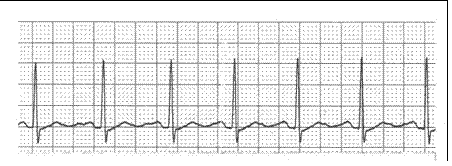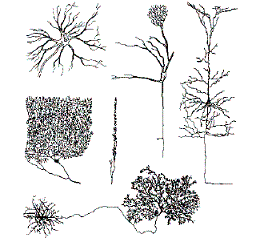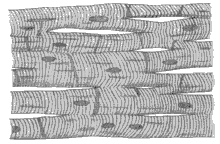Brain Dynamics:
Spike Challenge 1
Spikes are everywhere – and are
produced by cells of vastly different types.
The shape of the spike probably looks familiar - like the patterns displayed on medical instruments
that monitor your heart. The cells that make up your heart and even your pancreas all spike like
neurons do!
Spikes patterns in the electrocardiogram of the heart.

Keener and Sneyd, Mathematical Physiology, Springer, 1998. Figure
from p. 314.
Looking under a microscope at neurons from your cortex, thalamus, and cerebellum,
let alone a heart cell; you would be surprised that they do anything similar.
The diversity in cell shapes and sizes make a virtual zoo. For more on neurons,
see Neuroscience Basics.
|
Neurons… |

From Johnston and Wu,Foundation of Cellular Neurophysiology, MIT Press, 1997. Figure from p.2. |
and a group of cardiac cells…

Keener and Sneyd, Mathematical Physiology,
Springer, 1998. Figure fromp. 382. |
On the surface, these cells could not look more different. But they all spike, and
there has to be a reason. The first mathematical challenge, then, is to find a
common and robust mechanism underlying the spiking in all of these cells!



